The numbers don’t lie. Among iRacing’s GT cars, the GT3s are the kings of participation. Last season, nearly 1400 drivers per week raced in the Blancpain Sprint Series, the officially sanctioned virtual version of the real-world GT3 championship.
Even outside of that headliner series, the GT3 participation dwarfs that of many other series. The GT3 class in the IMSA series attracted almost 400 drivers per week and the team-based Blancpain Endurance Series had 254 drivers, on average.
It’s easy to understand the appeal of these cars. In the real world, they were designed for gentlemen drivers, and let’s face it: While plenty of professional drivers use iRacing to learn tracks or hone their skills, the vast majority of iRacing’s subscriber base aren’t pros.
For those drivers, the downforce and driver aids of anti-lock brakes and traction control make the cars a bit easier to handle. However, they still have the power and performance that you’d expect from a GT car, so they challenge top-level drivers to extract every bit of speed possible.
Also, until the recent addition of the Ferrari and Ford GTE cars, the GT3 class was the only one on the road side with multiple car makes. The ability to choose a car that best fits your driving style, from the speedy McLaren to the quick-cornering BMW, makes these cars even more accessible.
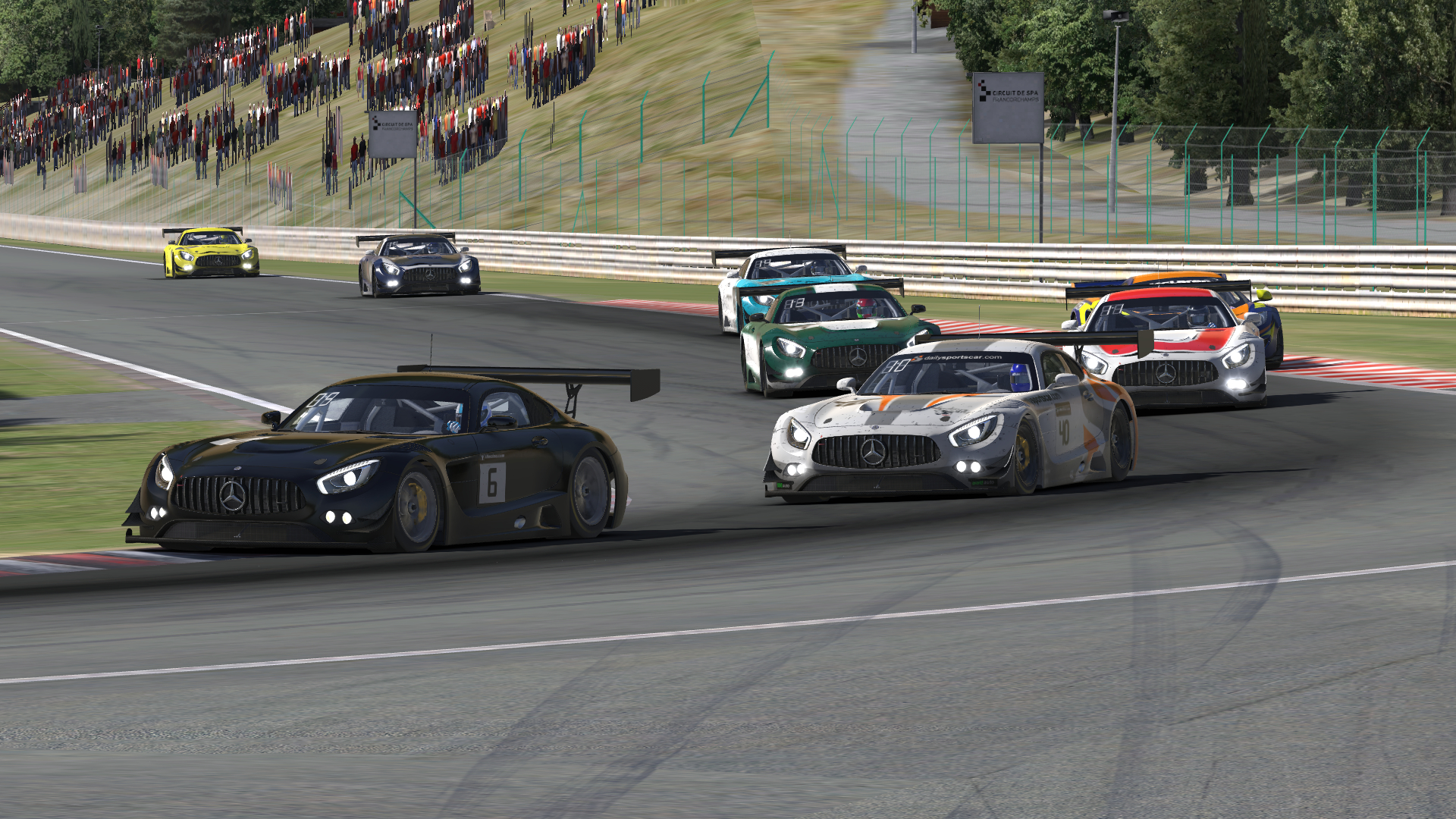
A pack of cars heads into Les Combes early in the 24 Hours of Spa.
The Shakedown
Of course, multiple makes in a single class will always conjure up one dreaded phrase: balance of performance. Just as in the real world, drivers favoring a particular car will always complain if it seems like they aren’t as competitive as they could be.
Sometimes, those complaints are legitimate. Despite the efforts of iRacing and its beta testers to get the balance correct, at least one car always seems to get the short end of the stick. The preferred car in last year’s Spa 24-hour race — the Audi R8 — was largely left untouched in this year’s event due to an unfavorable balance of performance this season.
Instead, last week’s grids at Spa were dominated by the McLaren and Mercedes, and at times, those were the only cars I saw around me. Although it would be nice to have a wider variety of cars on the grid each week, ultimately, you can’t make anyone race a car they don’t like or aren’t competitive with.
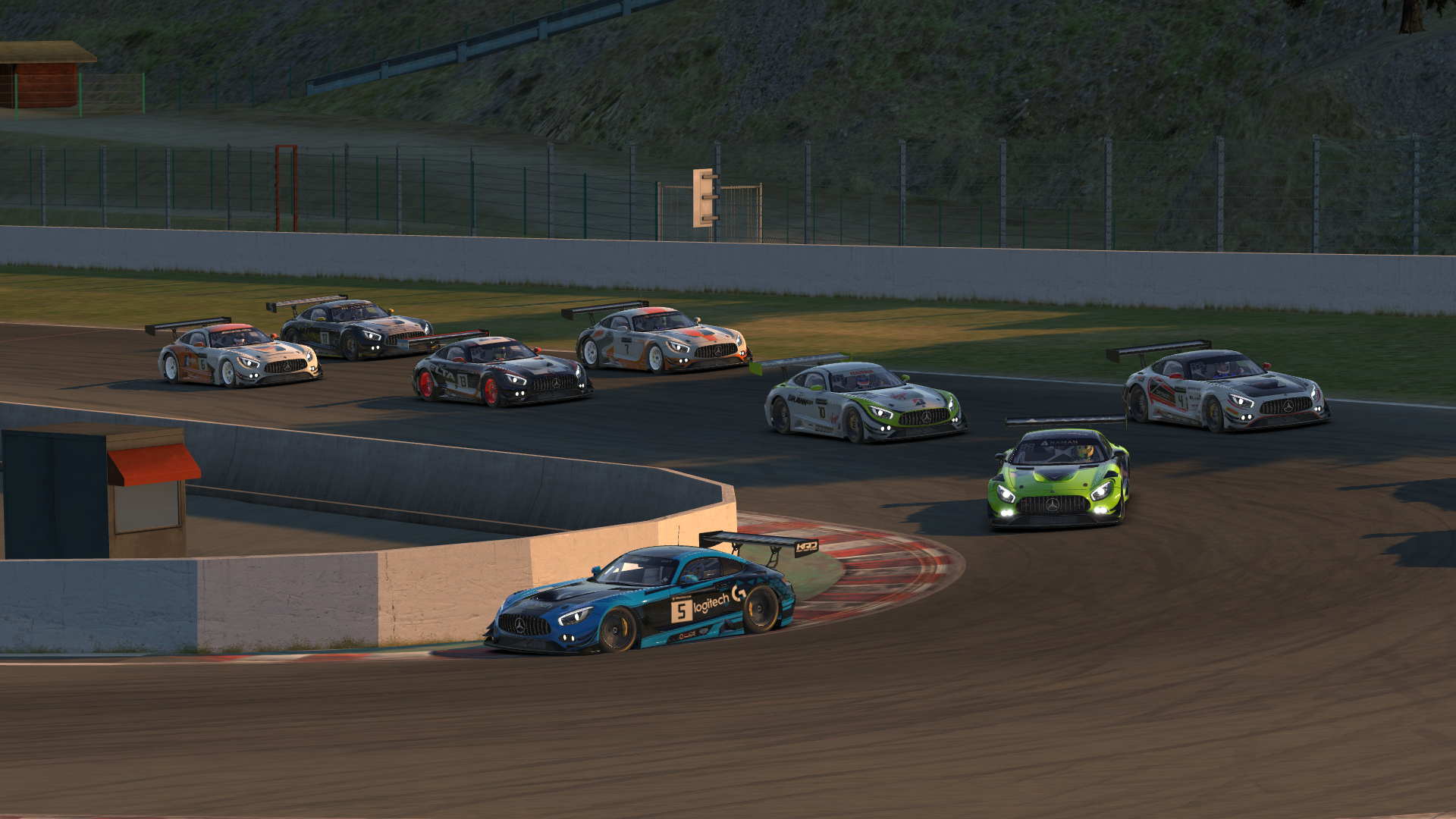
A field of Mercs takes the green flag at Spa.
Fortunately, no matter which car you want to drive, it’s relatively easy to find a setup. While setups are closely guarded secrets in some high-level cars, there’s typically no shortage of available setups for these cars, perhaps due to the sheer volume of people driving them.
No matter which car or setup you choose, though, the GT3 cars aren’t exactly arrive and drive. You’ll want to put in practice to get used to the handling on new and old tires, with a full or empty tank of fuel, and in different weather and track conditions.
And while these cars can be fun to hotlap alone, it’s also important to get used to driving around other cars. Feel the effects of the draft down the straightaways and of dirty air in the corners.
Given the popularity of the GT3 series, usually with two or more splits in each timeslot, you’re likely to find competition close to your own pace. That makes knowing how to drive around other cars even more important.
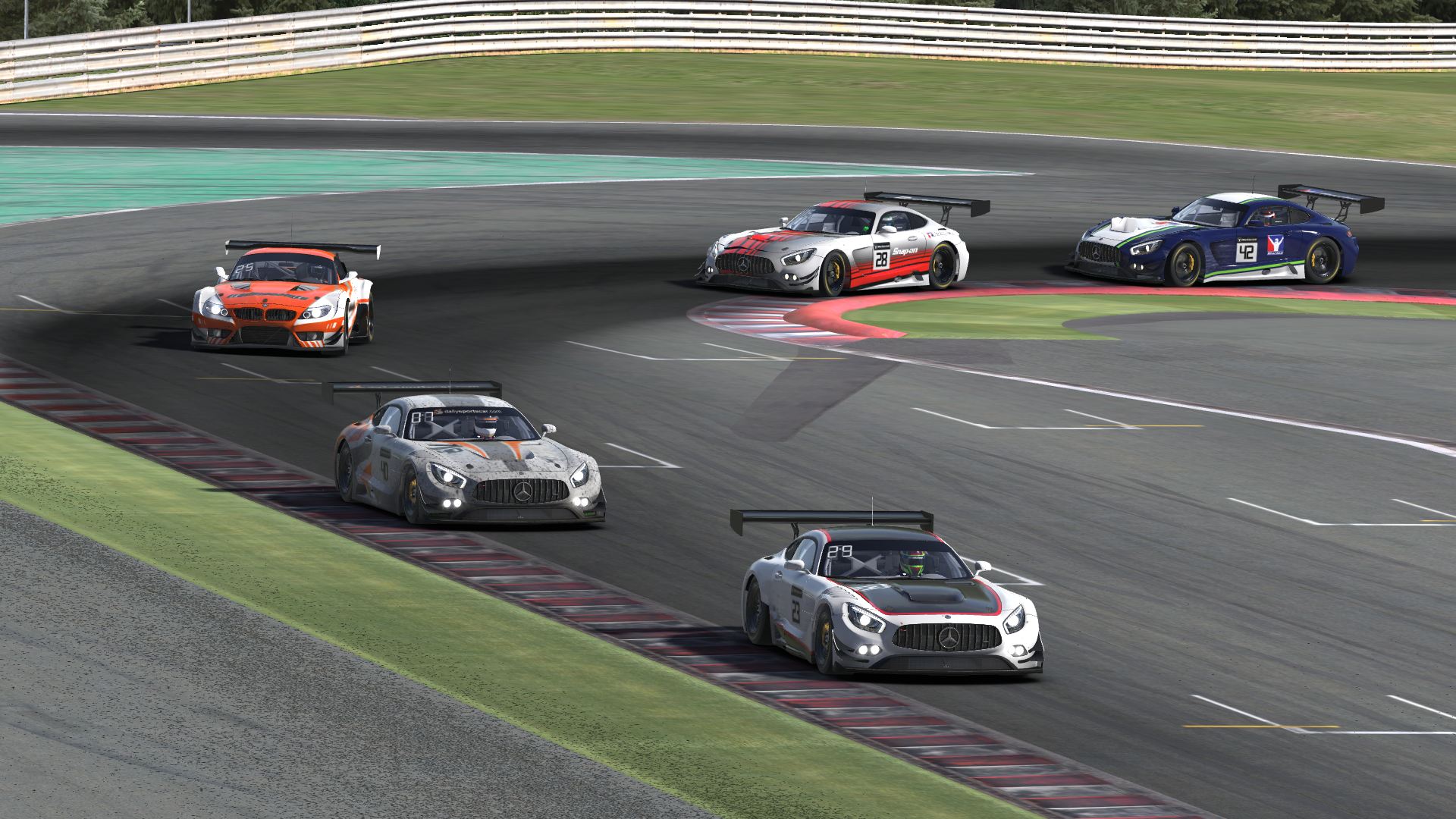
Experience driving in traffic pays off when racing GT3 cars.
A Warmup Act
That close competition — and the consequences when it goes wrong — has given GT3 racing a less-than-sparkling reputation for clean driving. More often, you hear complaints of aggressive moves and questionable driving standards.
With my safety rating still recovering from a rough pair of races in the V8 Supercar, a week in the GT3s was risky, especially at Spa, where it’s easy to accumulate off-track incidents by barely overusing the astroturf and paved runoff areas.
With one Blancpain Sprint Series race and five stints in the weekend’s 24 Hours of Spa planned, I had a lot of time for the incidents to pile up.
On that note, my week got off to an inauspicious start in the BSS race I ran. Just after the green flag flew and the field plunged down the hill toward Eau Rouge, GT3 happened. Two cars fighting for the same piece of road made contact, triggering a pileup in the middle of the track.
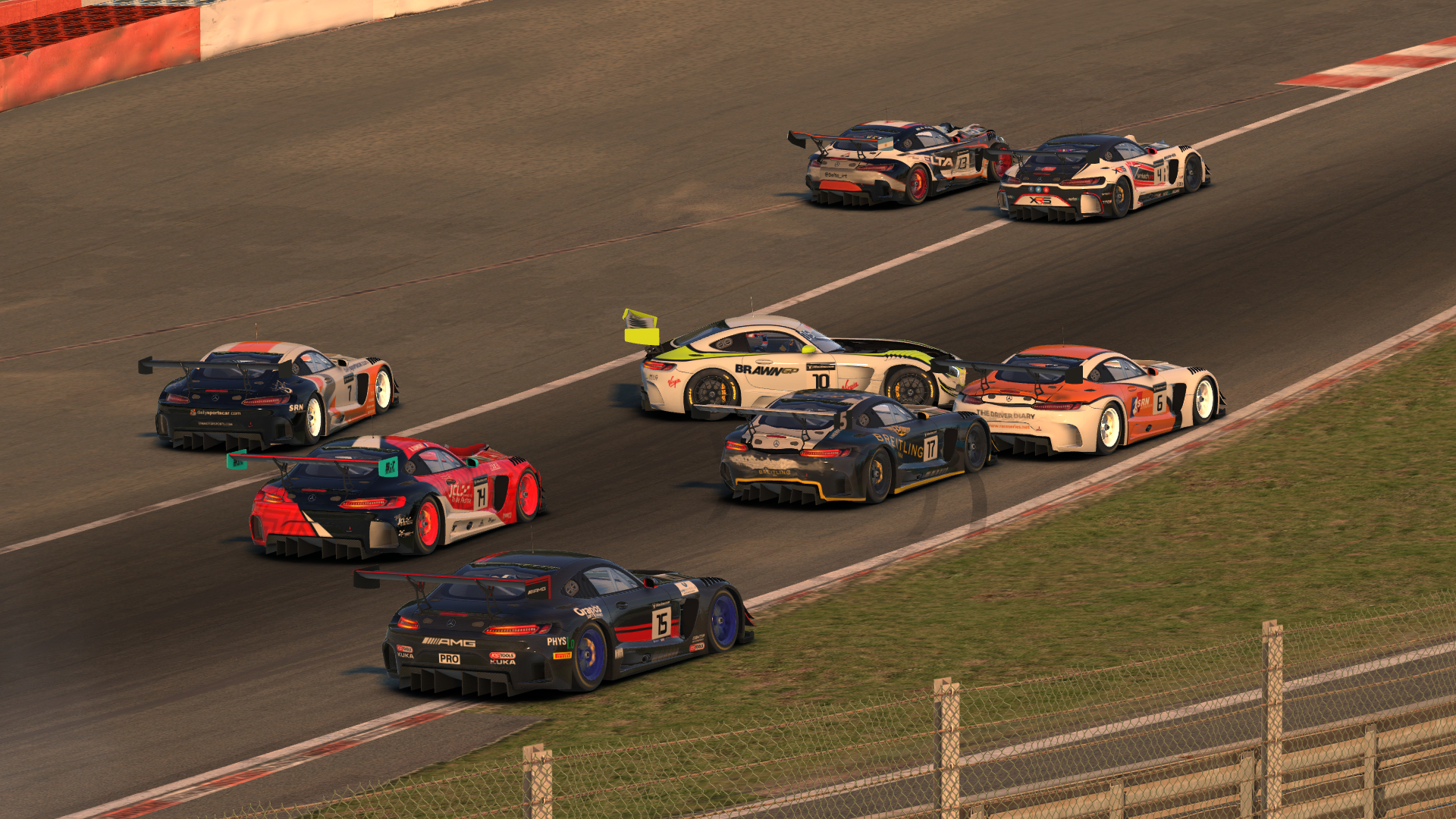
Karl and I avoid the first-lap crash at Eau Rouge.
My teammate Karl Modig and I started eighth and ninth, respectively, so we were among the first on the scene. While he swung wide onto the runoff, I hit the brakes and snuck by on the inside of the track. In the process, the car behind me rear-ended me, damaging my rear bumper but thankfully not my wing.
One corner into the week, I already had my first four incident points. Sorry, safety rating. I barely knew you.
Although I passed Karl while avoiding the crash, he passed me a few laps later and set sail up the road, trying to chase down the leaders that opened up a big gap amid the early chaos.
Even in the draft, I couldn’t match his pace, so I was left playing defense. One high-iRating driver that started in the back of the field caught me and easily passed me entering the Bus Stop on lap 6, and another such driver was closing in quickly.
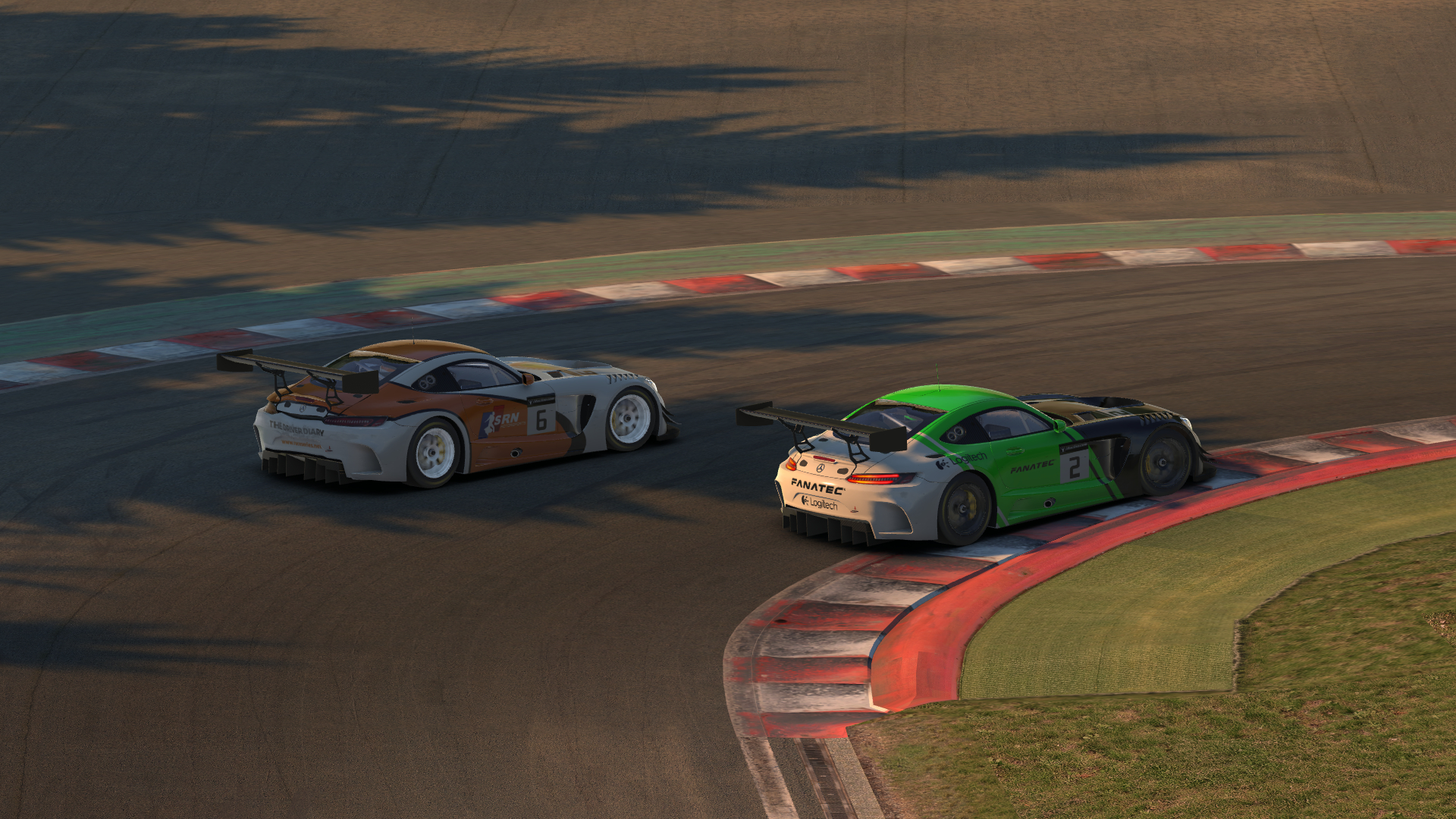
Conceding a position to a faster driver in the Bus Stop.
Once he got within the range of both my draft and my dirty air, he made an early pit stop — the BSS series uses a fuel limit to force all cars to pit once — and given his pace, I expected him to easily be ahead after I pitted a few laps later.
But to my surprise, I emerged from the pits more than three seconds ahead. It seemed that he emerged from the pits in traffic and his undercut attempt backfired.
He made up some of that gap in the next few laps, but I was able to hold onto sixth place at the finish while Karl, eight seconds up the road from me, managed to stay ahead of the fast driver charging from the rear of the field to finish fourth.
Blancpain Sprint Series
Wednesday, July 19 at 8:00 pm EDT • Strength of Field: 3420| Finish | Start | Interval | Laps Led | Fastest Lap | Incidents | Points | iRating | Safety Rating |
|---|---|---|---|---|---|---|---|---|
| 6 | 9 | -23.074 sec. | 0 | 2:17.545 | 7 | 156 | 4546 (+27) | A 3.72 (-0.11) |
A Eureka Moment
While I narrowly avoided the GT3 carnage and made it to the finish, being more than half a second per lap slower than Karl didn’t exactly inspire confidence leading into the 24-hour race, so I was determined to find some pace and consistency.
Each lap I ran, I became more frustrated with how the car was driving. At one point, I described its handling as “push, push, push, push, push, loose, loose”. I even found a different setup that drove more to my liking, but one of my teammates talked me down from the ledge of making a setup change so close to the race.
That meant I was left to figure out how to drive a car that didn’t drive at all like I figured.
As I ran more practice laps, it suddenly hit me. It wasn’t the car or the setup that was bad, but my own driving — or overdriving — and I’d been too stubborn to notice.
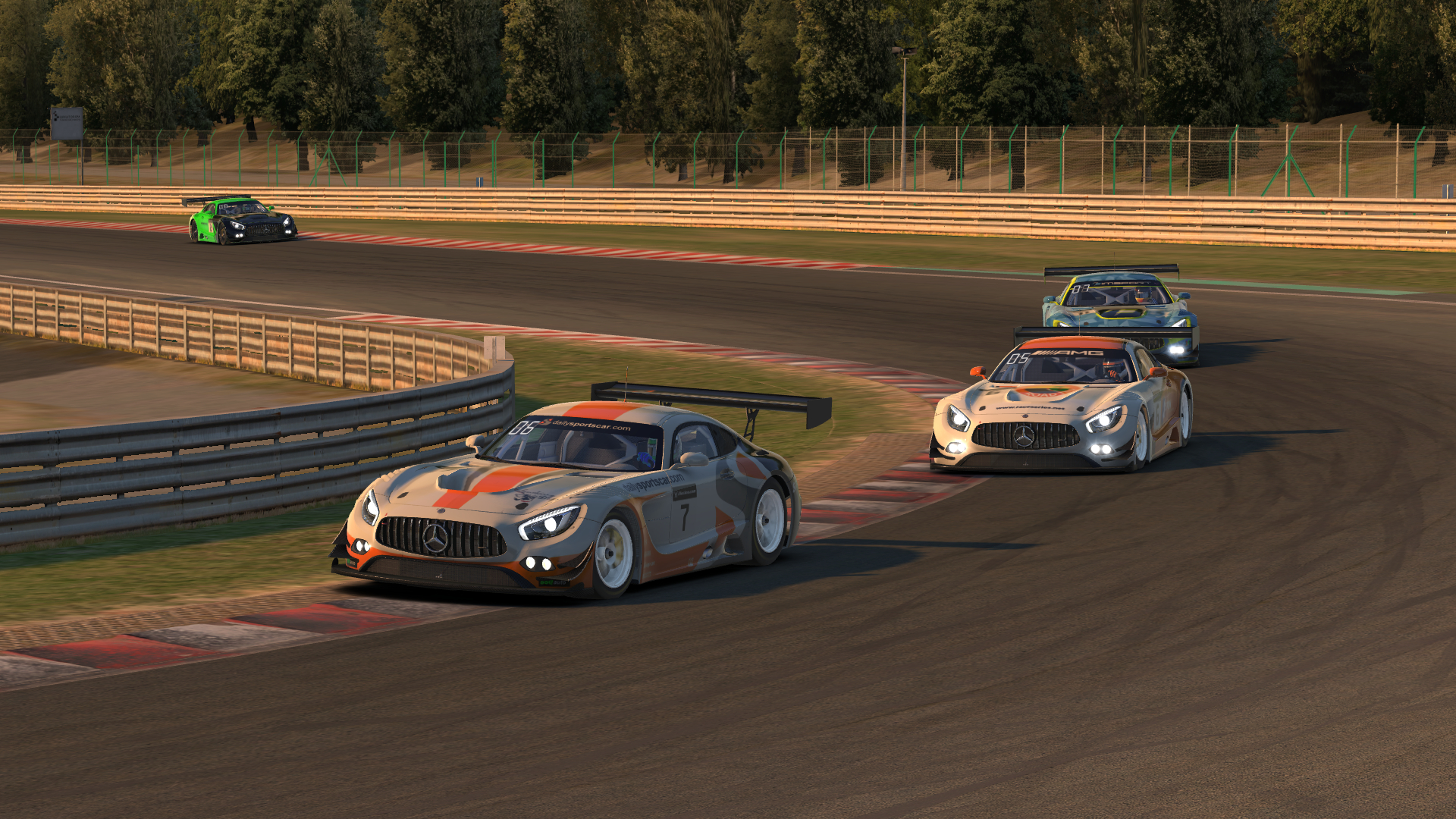
Karl drives away early in our BSS race together.
My driving style is usually conservative and well-suited to cars that are easy to overdrive, but I’d never thought of the Mercedes in that way. So why the disconnect?
It’s because I had been treating GT3 cars differently. I’m used to driving car with clear limits — usually with their weight, brakes, or downforce — but I had been driving the GT3s as if they were limitless by comparison, braking deep into the corners, trying to carry lots of mid-corner speed, and getting back on the throttle early.
That aggressive approach doesn’t really work with the heavy, powerful Mercedes. Driving in too deep created a push through the mid-corner as I struggled to get the car to turn. And by the exit, I had so much steering in the car that the rear end wanted to slide as I got back on the throttle.
Once it clicked in my head to stop overdriving the car, I immediately found speed and comfort — the latter of which is arguably the more important for a long endurance race.
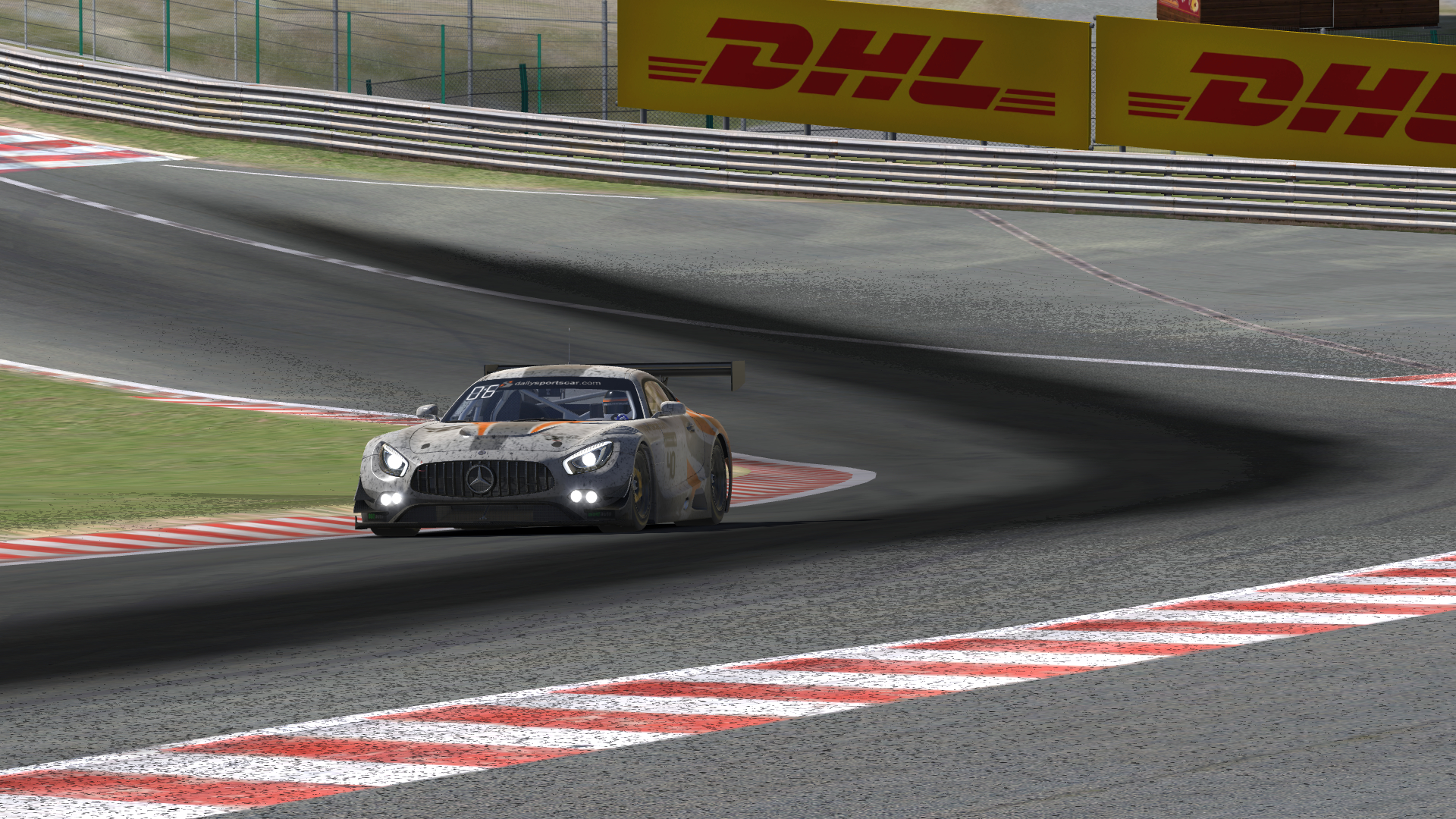
Heading through Eau Rouge late in the 24 Hours of Spa.
Unsafe at Any Speed?
As the race start approached on Saturday morning, I felt better about my driving but was still resigned to being the slowest driver on our team. My three teammates were all strong, so I just hoped I wouldn’t weigh them down too badly.
We started from 20th place in the top split, and it didn’t take long before more GT3 antics unfolded around us. On lap 2, several of the lead cars were collected in a crash at the Rivage corner, which our driver Steve McGarvey expertly navigated past while taking only a bit of cosmetic damage on the rear bumper.
By the end of the first hour, he had taken us from 20th on the grid into the top ten despite the incidents around us and the track becoming slick and slow from the hot tires running on it.
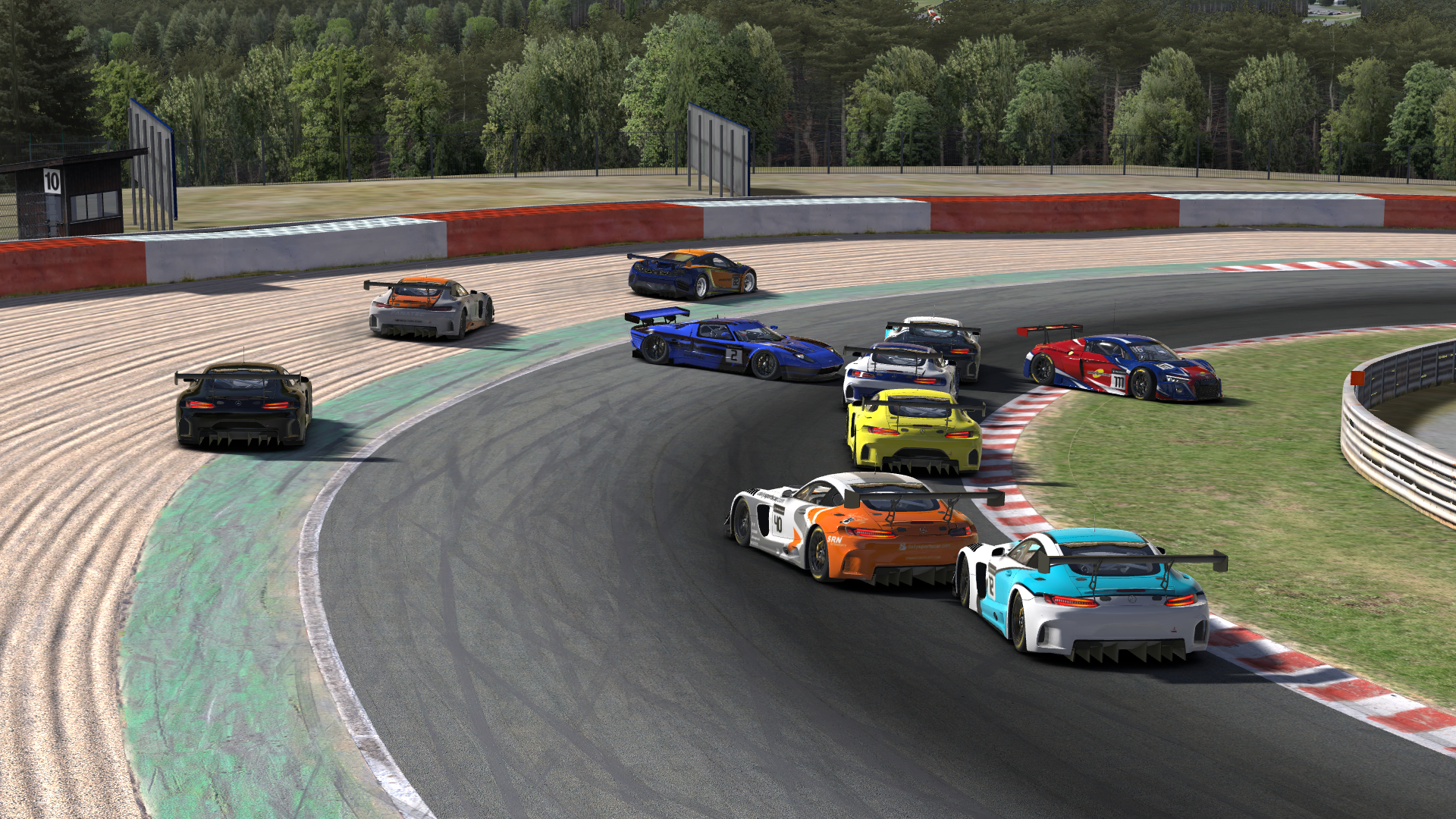
Cars pile up ahead of us in the Rivage corner.
The next few hours also went well, and when I took over the car from Karl just after the six-hour mark, we were in sixth place. However, the three teams chasing us all had fast drivers in the car, so I didn’t expect to hold them off. Instead, I just wanted a clean double stint running a decent pace.
Most of my laps were in the low- to mid-2:22s, a few tenths off of what Karl was running. I considered that a largely successful start to my race, but as expected, I was the slowest driver on the team to that point, even despite the track rubbering in during the early hours.
The bigger obstacle was incident points. Although taking lots of off-tracks wouldn’t hurt us in the race, we would feel the effects in our safety ratings afterwards. Each of my teammates racked up more than 30 incident points in their opening double stints, and I joined them in that club with 42 incidents of my own.
Those included a car contact with the second-place McLaren that slowed down more than I expected braking for La Source. Neither of us took damage, but it added four more incident points to my already lofty ledger.
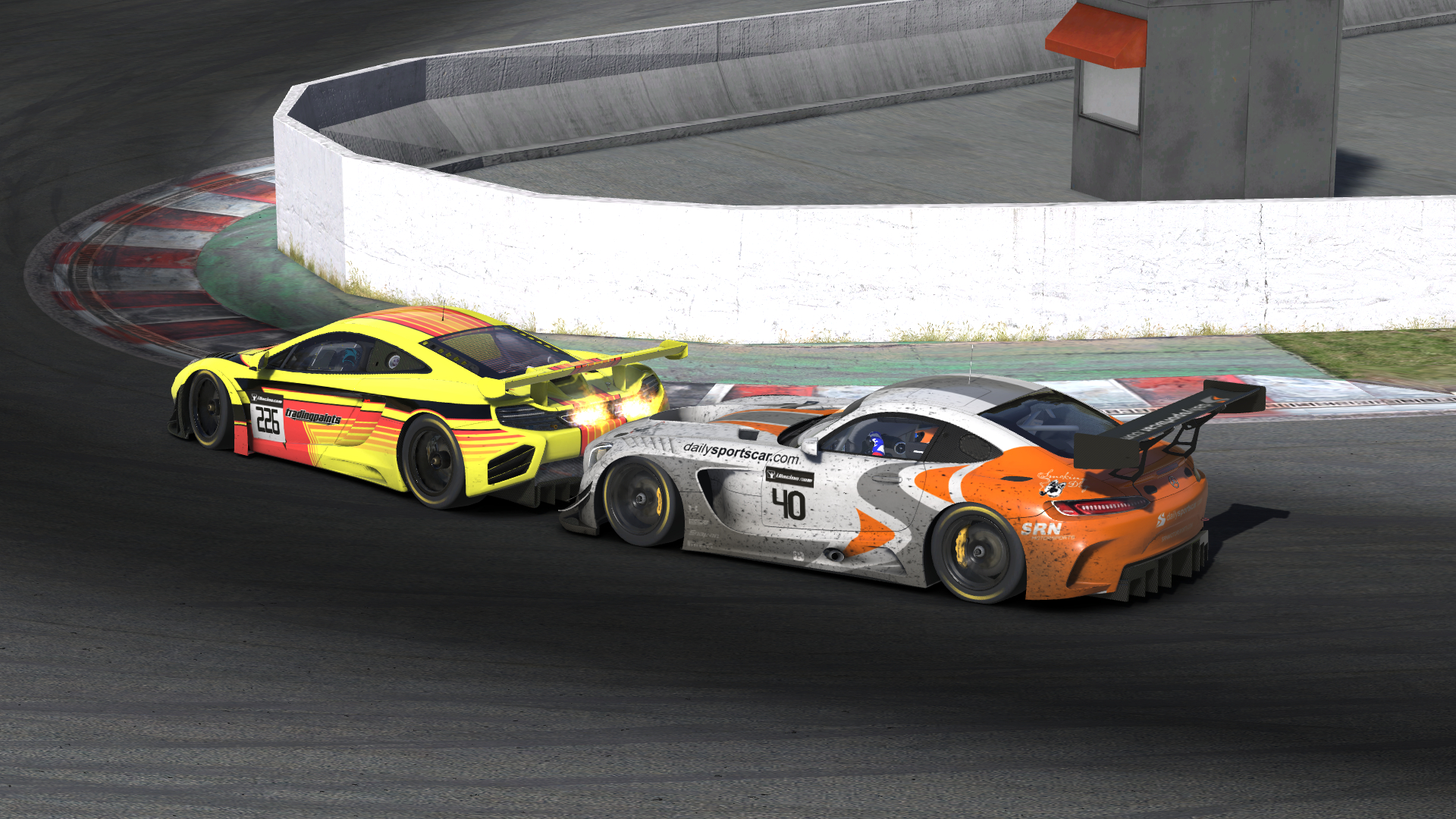
Getting a barbecued grill after contact with the second-place McLaren.
Gaining Confidence, Gaining Pace
As the hours ticked away, our team continued to run between 6th and 8th positions, depending on the pit strategies in play around us. When I hopped back in the car for a mid-race single stint, I found the track conditions slightly improved and my pace slightly better, as I was able to eke out a handful of 2:21s.
After that, I got about five hours of sleep before waking up early on Sunday morning for my final double stint of the race. Our car was still running around sixth place, and the lap times of my teammates and our competitors had all improved as the track gained grip.
When I first got in the car, my pace wasn’t much different — still mostly in the low 2:22s. But as I felt out the conditions, I found that I could drive a bit deeper into the braking zones and carry more speed through the corners.
It was still a far cry from the limitless driving style I once expected a GT3 car to tolerate, but at least to a degree, it did reward pushing rather than punishing it. Although I had to contend with some traffic in the first half of that double stint, I was still able to run some laps in the mid-2:21s for the first time all race.
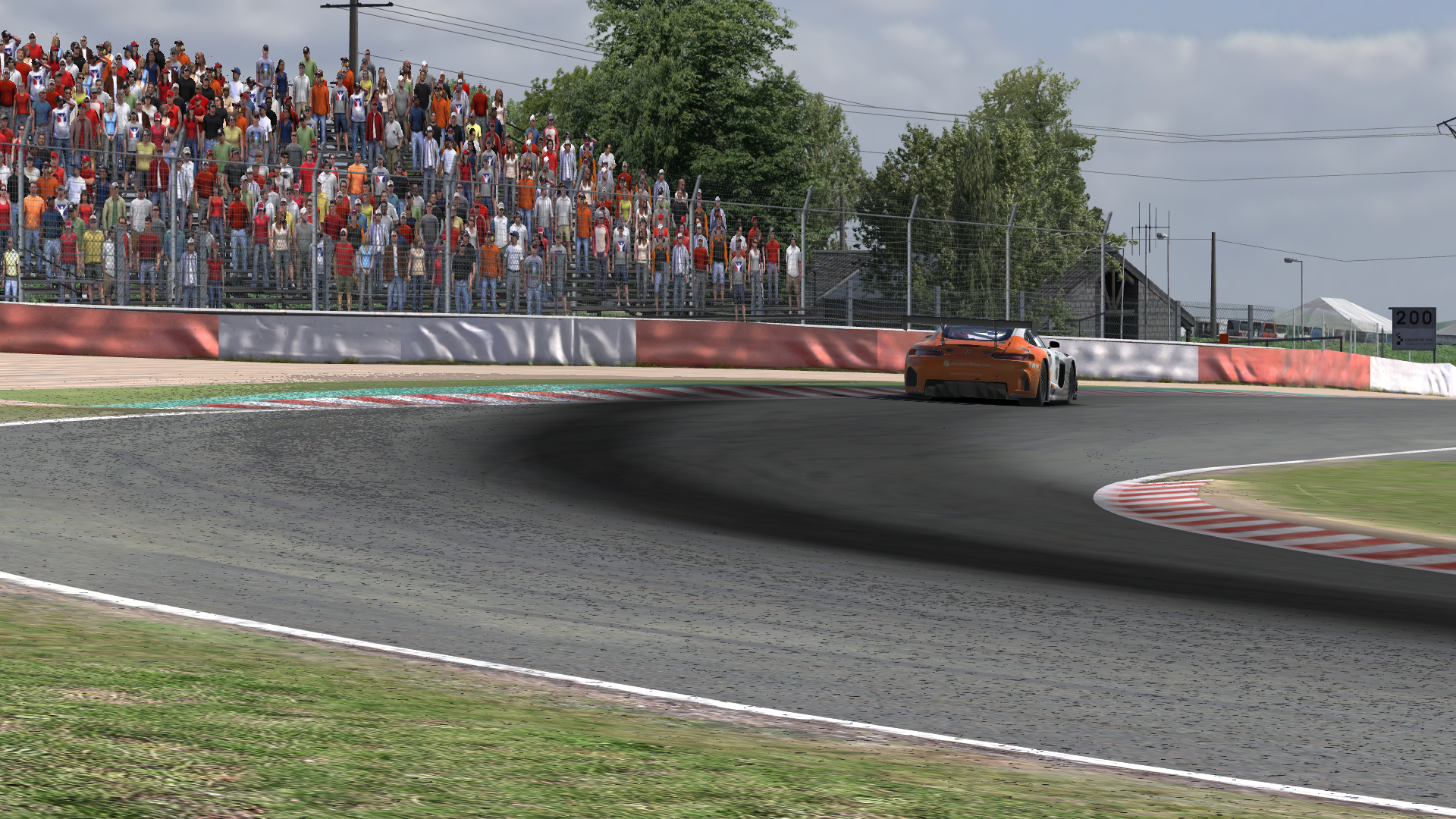
Marbles begin to accumulate off the racing line at Malmedy.
I also saw a familiar face in my mirror. The high-iRating driver that blew by me in my BSS race was closing in, albeit at a much slower rate than he had earlier in the week. Maybe he was holding something back since his team was a few laps behind us, but maybe our pace was also more similar this time around.
In either case, I held him off until I made my pit stop, and in my final stint of the race, I found mostly clean track ahead of me. That allowed me to run my fastest laps of the race, consistently in the 2:21s.
Finally, it seemed, I had figured out how to push this car just the right amount. Even better, I made it through those final two stints with only about a dozen incidents for a race total of 64.
As I handed off the car to my fourth teammate, Jason Gerard, for one final stint, we were solidly in sixth place and stayed there until the finish. In the top split against many of the top teams, we had a strong showing with no major incidents and no damage repairs in 24 hours.
24 Hours of Spa
Saturday, July 22 at 9:00 am EDT • Strength of Field: 4127| Finish | Start | Interval | Laps Led | Fastest Lap | Incidents | Points | iRating | Safety Rating |
|---|---|---|---|---|---|---|---|---|
| 6 | 20 | -1 lap | 0 | 2:21.300 | 64 | 240 | 4546 (--) | A 3.06 (-0.66) |
How to Work the Merc
For anyone fraught with frustration about driving the Mercedes or any heavy car that’s easy to overdrive, I hope my pre-race epiphany can enlighten you as well. It’s as easy as A-B-C:
A: Abusing the ABS will cost you. With no threat of locking up the brakes, it’s tempting to put the middle pedal to the floor, but engaging the anti-lock brakes isn’t as efficient as threshold braking. In the heavy braking zones, I aimed for no more than about 75% brake application.
B: Brake early, then brake earlier. It seems almost instinctual for drivers searching for speed to try braking later for corners. But in heavy cars, the slow-in, fast-out style really is best, and it will lead to more consistency as well if you also follow the final tip.
C: Control the corners. Don’t get behind on your braking, turning, or throttle application, and don’t rush them either. That was the case when I overdrove the entry, forcing me to fight a push, then crank in too much wheel and deal with oversteer on exit. Essentially, my errors compounded throughout the corner, like a runner tripping over his feet at the start of a footrace.
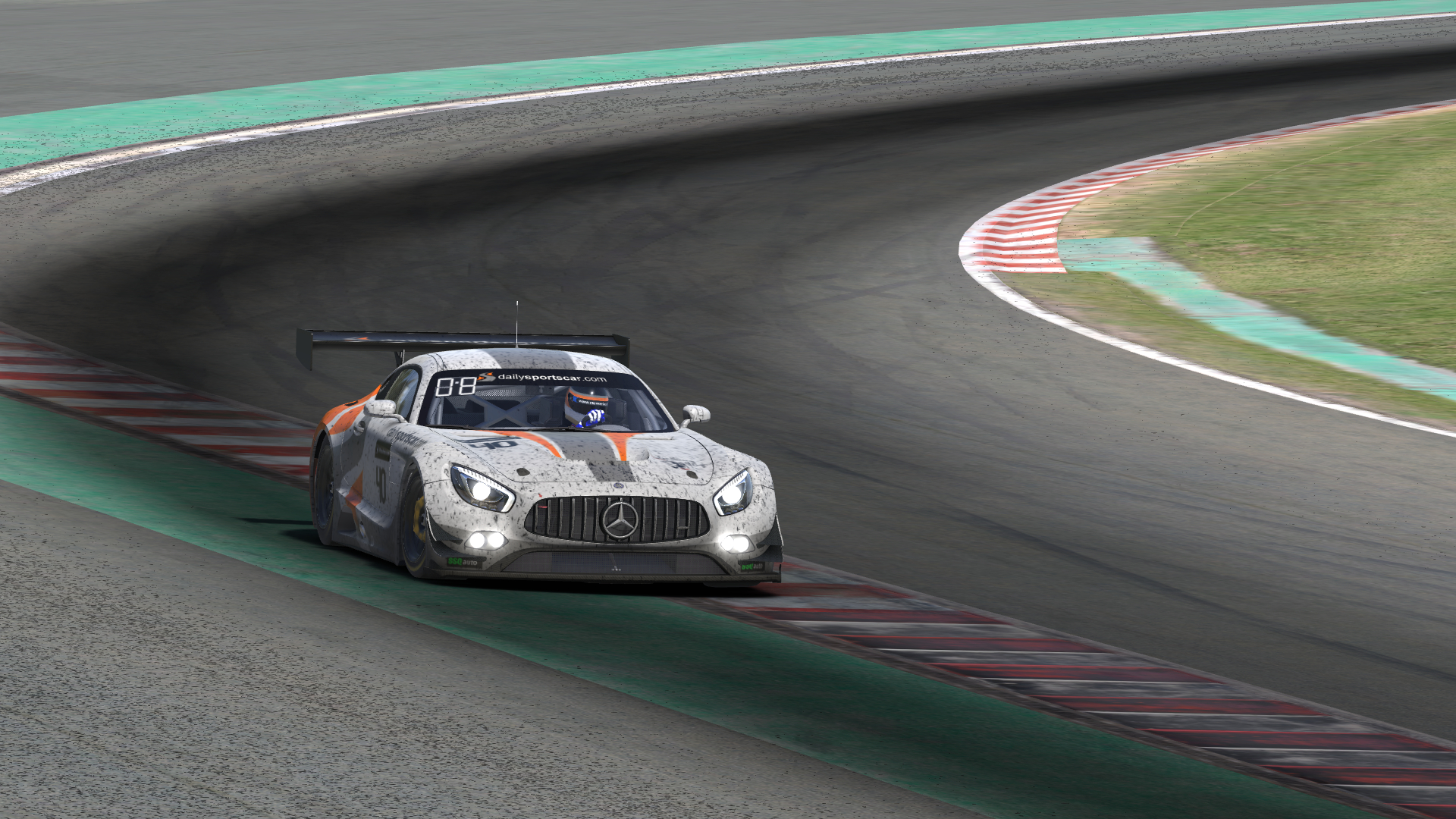
Another tip: Stay off the astroturf at Spa. There’s nothing there but a dirty 1x.
Sticking to these tips will make you a smoother driver, and at least in GT cars, smooth is fast. Plus, when you’re dealing with some of the crazy and aggressive GT3 drivers, that smoother approach tends to pay off as long as you can avoid their wreckage.
But why should you take any speed tips from me? I was the slowest driver on our team, right?
Well sure, a couple of my teammates may have run faster laps than me with off-tracks, and they weren’t in the car near the end of the race when the grip level was highest.
But according to the results, which only consider clean laps and give no preference to the track conditions, my lap of 2:21.300 was our team’s best, making me our fastest driver.
The numbers don’t lie, of course.